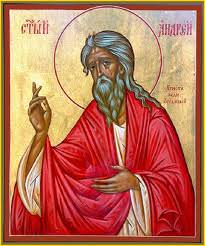Magic and the Christian Image
Maguire, Henry
Extract from: Byzantine Magic – published by Dumbarton Oaks Research Library and Collection, Washington, D.C. (1995)
Abstract
For the purposes of this article,“magic is defined as relations with the supernatural that were outside the regular channels of the church. By this definition, the boundaries of what constituted magic in Byzantium were not fixed, but varied over space and time. When the church sought to define more closely which practices were orthodox and which were not, the definition of magic tightened. This  was especially true with respect to the church’s attitudes toward the use of Christian imagery.
was especially true with respect to the church’s attitudes toward the use of Christian imagery.
There is a story in the life of St. Andrew the Fool conceming magic and the Christian image. A certain woman was being neglected by her husband. She called in a magician to help her, who incanted some demonic spells over the oil of a lamp which he lit before the icons in her house. Her problem was immediately resolved, but she started to have some disturbing dreams. In one of them, she saw that all her icons had been smeared from bottom to top with human excrement. In her dream, she was told the reason for their foul appearance: because of her occult activities, the grace of God had departed from the icons, leaving them only as empty matter—that is, color and wood—where now was found the stench and turpitude of demons.


Magic and the Christian Image
Maguire, Henry
Extract from: Byzantine Magic – published by Dumbarton Oaks Research Library and Collection, Washington, D.C. (1995)
Abstract
For the purposes of this article,“magic is defined as relations with the supernatural that were outside the regular channels of the church. By this definition, the boundaries of what constituted magic in Byzantium were not fixed, but varied over space and time. When the church sought to define more closely which practices were orthodox and which were not, the definition of magic tightened. This was especially true with respect to the church’s attitudes toward the use of Christian imagery.
was especially true with respect to the church’s attitudes toward the use of Christian imagery.
There is a story in the life of St. Andrew the Fool conceming magic and the Christian image. A certain woman was being neglected by her husband. She called in a magician to help her, who incanted some demonic spells over the oil of a lamp which he lit before the icons in her house. Her problem was immediately resolved, but she started to have some disturbing dreams. In one of them, she saw that all her icons had been smeared from bottom to top with human excrement. In her dream, she was told the reason for their foul appearance: because of her occult activities, the grace of God had departed from the icons, leaving them only as empty matter—that is, color and wood—where now was found the stench and turpitude of demons.
Click here to read this article from Byzantine Magic
Subscribe to Medievalverse
Related Posts